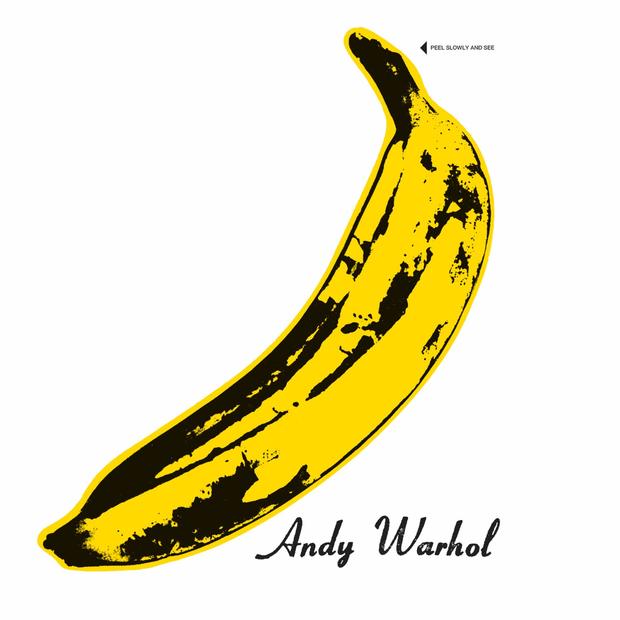The Velvet Underground's landmark debut turns 45
As described in "The Rolling Stone Encyclopedia of Rock & Roll," the Velvet Underground was the opposite of most of the pop bands that came of age in the late '60s. Its 1967 debut, "The Velvet Underground and Nico," was noisy and experimental, and the subject matter in songwriter Lou Reed's lyrics dealt with such topics as sex and drugs told in more stark terms.
Because it operated against formula, the Velvet Underground wasn't commercially successful during its brief career, but it went on to influence numerous artists. In a 1984 interview, musician and producer Brian Eno told journalist Kristine McKenna: "I think everyone who bought one of those 30,000 copies [of the first Velvet Underground album] started a band."
The talent and configuration of the Velvet Underground is not like any other in rock and roll: Reed's streetwise singing and lyrics defined the Velvets' vision; John Cale's viola playing gave the group its experimental leanings; Sterling Morrison's rock guitar contributed to the Velvets' sound; and Maureen Tucker's minimalist drumming conveyed a sense of urgency. Through an association with pop artist Andy Warhol, who became the group's manger and patron, the Velvets brought in the German model Nico as a second singer -- her stately vocals added another dimension to the music.
In the 45 years since its original release, "The Velvet Underground and Nico," is acknowledged as an important record -- it was recognized by the Library of Congress National Recording Registry and is ranked Number 13 in Rolling Stone's "500 Greatest Albums of All Time."
This past Tuesday, "The Velvet Underground and Nico" was reissued again, this time as a whopping 6-CD boxed set that contains both the stereo and mono versions of the original 11-song record; the rare Scepter Sessions recordings; "Chelsea Girls," the 1967 debut record by the singer Nico, which features songwriting and instrumental contributions from some of the Velvet Underground members; and a rare live recording of the band with Nico from a show in Columbus, Ohio in 1966.
Lenny Kaye, the rock writer and guitarist for Patti Smith since the early '70s, says the Velvet Underground is part of his holy trinity of most favorite groups. "They changed the channel from the rainbow-studded optimism of the West Coast," he tells CBSNews.com, "to a real sense of documentary realism. I bought the 'banana album,' as it was called, and fell deeply under its spell: the sounds that they were able to make; the primitivism along with the incredible artistic sophistication of what they were dealing with; the sense of raw emotion and unvarnished lyricism; Lou's great sense of lyric within pop structure."
First released in 1967, "The Velvet Underground and Nico" covers a wide breadth musically and thematically -- its chaotic rock and roll is reflected in some urgent-sounding pre-punk rockers in "Run, Run, Run," "European Son" and "I'm Waiting for the Man." One of the highlights of the record is the seven-minute-plus "Heroin," a track that Rolling Stone writer David Fricke described in the liner notes of the 1995 Velvet Underground career-spanning box, "Peel Slowly and See": "It is a song of programmatic genius, sucking you into the wake of the addict's rush, with vicious acceleration, suddenly breaking into a dead-calm ..."
While musically abrasive at times, the album also shows its reflective side in the few numbers that Nico sings lead, particularly "I'll Be Your Mirror" and "Femme Fatale." And the record's opening track, "Sunday Morning," is a gentle and dreamy number -- perhaps the closest thing to a commercial pop song the group would ever record.
In addition to containing the original album, the new boxed set really paints a full picture of the period when "The Velvet Underground and Nico" was made. The tracks from the Scepter Sessions -- recordings from 1966 of the songs that would serve as the basis for the final album; the Factory rehearsals, which sounds loose and informal -- one of the songs, "Joanie Lee," has a country-blues feel a la the Rolling Stones that later morphs into a guitar jam. And the live 1966 concert at the Valleydale Ballroom is rough-sounding like a bootleg, which kind of gives it a charm; it also features epic-length performances of "Melody Laughter" and "The Nothing Song" totaling about 60 minutes combined.
The boxed set's liner notes by Richie Unterberger paints a fascinating if complex story of not only how "The Velvet Underground and Nico" got made, but also the bad luck that accompanied its original release: the album was recorded and ready for release in 1966, but it wouldn't see daylight until the following year, partly due to the production involved in the distinct packaging featuring the trademark peelable banana on the album's front cover, and a legal issue involving a photograph on the back cover. The album only reached Number 171 on the Billboard album chart; by that time, Nico was fired along with manager Warhol.
The Velvets went on to record three more excellent albums -- "White Light/White Heat," "The Velvet Underground" and "Loaded" -- before Reed left band in the early '70s. Still, the mark left by the group would be felt in decades to come in the many acts it influenced, including David Bowie, Roxy Music's Bryan Ferry, R.E.M. and the Dream Syndicate.
"They did something that no other group at the time did," Kaye says earlier, "which is to delve deeply into the self-conscious of human desire, disintegration and rebirth -- and put it together in song form. Surely one of the most important and far-reaching bands ever. There's a true sense of heart and soul within their music, and that's a very hard balancing act to do."
